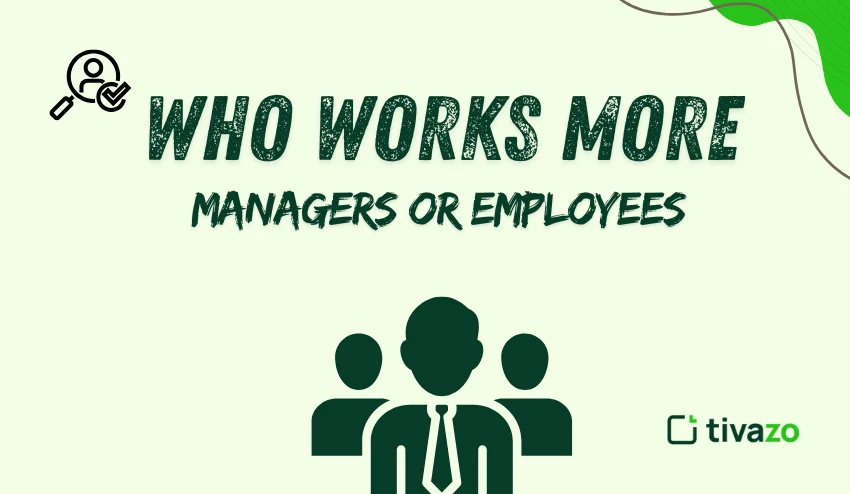In the modern workplace, there is a common debate that continues to rise: Who works more/ harder – managers or employees? Managers oversee teams and are tasked with making decisions about future strategies. Employees work on the tasks that need to be done to help the organization get to its stated goals. Understandably, both are critical for an organization to function smoothly and be successful. In this blog, we will explore various facets of this debate, focusing on hours worked, role responsibilities, mental load, and positions within the organization.
We will touch on the discussion surrounding the quality of work and how that differs from the quantity of work, the pressures of decision-making, hours worked outside of standard timeframes, and the influence of the hierarchy in the organization on perceptions of workload on managers or employees. At the end of the blog, you will have a better sense of the real conversation behind the contributions made in the workplace between managers or employees.
Daily Duties: Managers or Employees
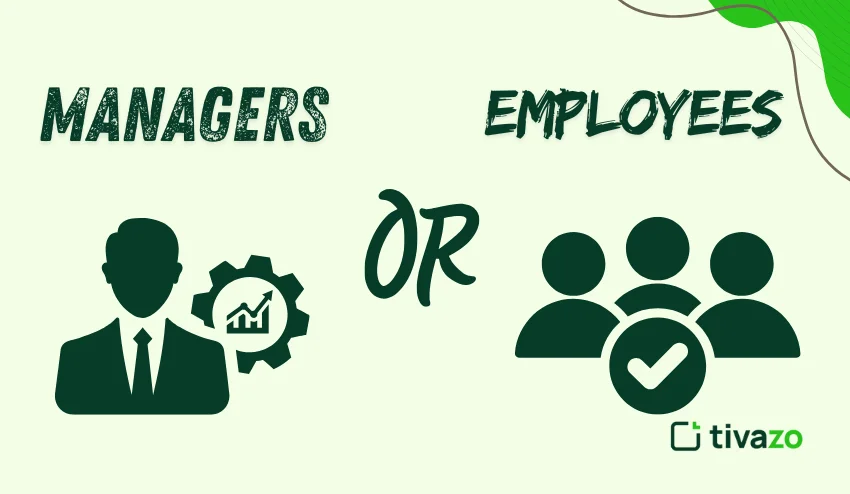
Managers
Managers have roles that include strategic planning, decision-making, and managing the productivity of a team. Their daily responsibilities could include:
- Meeting and performance review preparation and facilitation.
- Goal setting and aligning team objectives with the goals of the organization.
- Conflict management and making sure the team remains cohesive.
- Reporting to senior or higher management and stakeholders in the organization.
Employees
Employees complete the tasks that are assigned to them by a manager, which is part of their daily responsibilities. Daily expectations could include:
- Working on projects while meeting set deadlines.
- Collaborating with team members to complete their objectives.
- Providing feedback on progress to a manager.
- Being adaptable if project objectives change.
Who Works Longer?
Research has shown that employees usually work longer hours than managers or employees. Though managers spend their time planning and making decisions, employees will usually have the bulk of their workday spent completing tasks. Here are some factors to consider:
- Working for Direct Time on The Task: Employees have the most time working on completing tasks, projects, and deadlines during their workday.
- Meetings to Attend: Managers can find several hours every day taking care of meetings, which can reduce time spent on hands-on work.
- Overtime Work Patterns: Employees can find themselves working overtime each week, especially when in the final stages of a project or when a deliverable is due.
- Length of Time Working on Task in Blocks: Employees generally have longer periods of time without interruption while working on a task than a manager might have.
- Time Variety of Take and Switching: Managers often multitask through their work day, and whether it is an increase in multitasking or length of time or and effort that each task takes, it is never going to amount to the number of hours spent on continuous tasks.
- Flexibility: Managers generally can manage their work schedules, which often leads to having shorter days or weeks, whereas employees often have defined, structured work days.
Overall, this comparison shows that employees may spend more total hours working, whereas the managers or employees’ workload type and workload intensity are much different, which means that the quantity of time should not be equalized with the same work responsibility and tasks.
Mental Load: Degree of Work
Although individual employees may physically work longer hours than respective managers, the intuitive burden that falls upon a manager from facilitating decision-making, planning, as well as the understanding and managing of group dynamics, holds a greater mental load unintentionally upon a manager or employees. Such increases in mental load could result in greater levels of stress and burnout, specifically for managers.
The table below summarizes the distinctions in the organizational mental load between managers or employees:
| Aspect | Managers | Employees |
| Decision-Making | Oversee the organization’s important (critical) decision-making that impacts teams, groups, or projects | Attend to expediting assigned tasks with insignificant authority in decision-making |
| Strategic Planning | Plan out in the academy’s best interest, long-term planning, set goals, and assess for challenges | Very rarely engage in high-level planning; most notably, will follow through with directives |
| Problem-Solving | Manage issues that affect teams/groups or organizational problems dealing with projects and/or demand, with little time to make decisions | Typically address or deal with minor assignment problems that do not affect an organization |
Stress Levels | Higher levels of stress due to accountability from deadlines and managerial responsibilities for team and organizational performance | Moderate stress primarily due to task completion and deadlines |
| Cognitive Load | Simultaneously juggle multiple priorities, following up and/or keeping track of team performance, and adjusting their plan | Engaged in completing the assigned tasks for the day, with fewer cognitive demands. |
From this comparison on Individual Employee Time Tables indicated that though engaged in longer hours than their respective managers or employees, the mental load and responsibilities that were shared by managers were comparatively the same (more) load.
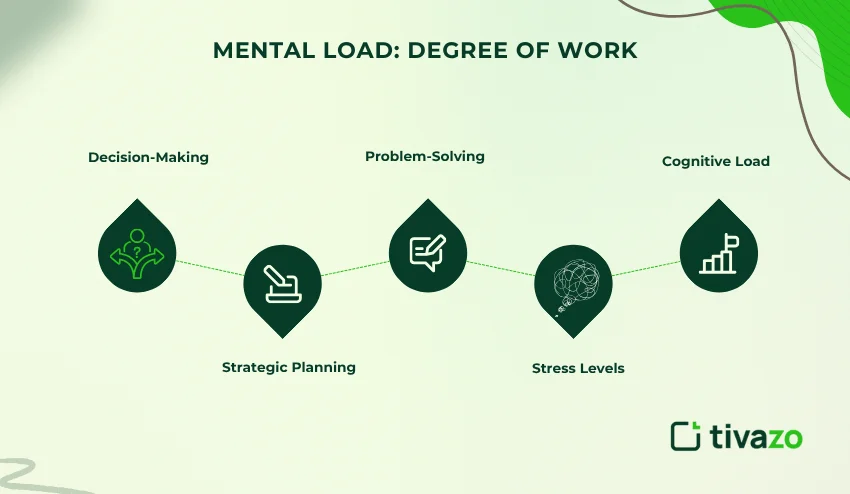
Decision-Making: Effect on Workload
Managers have the greatest influence on the outputs of their teams as well as the outcome of the organization. The consequences of making a decision can heighten managerial workload considerably, as managers have to weigh numerous factors and potential aspects of the consequences. Unlike employees who are generally focused on a task-based workload and taking responsibility for those tasks, a managers or employees needs to consider the wider implications of a decision and anticipate potential risks and opportunities.
This may include such aspects as the allocation of resources, the team’s workload capacity, deadlines, and its impact on the achievement of the organization’s objectives. Managers often juggled these with competing priorities such as the client’s expectations, employee satisfaction, or the organization’s strategic objectives. Effective Decision-Making requires either an increase in workload, the cost of time, but effective decision-making also needs analysis, foresight, and judgement, which makes effective decision-making one of the most cognitively exhausting components of a managerial role.
Work Quality vs. Work Quantity
In the workplace, it is common for managers to emphasize the quality of work; that is, projects will contribute to company objectives and be appropriate for an area of the organization. In contrast, employees often focus on the quantity of work, that is, the number of projects that will meet expectations, regardless of whether or not the projects correspond with company planning. Both elements are important for the success of an organization.
Here are some things to take into consideration:
- Attention to Detail: As the managers complete work, they make sure the deliverables meet the quality of the work related to the work scope, reduce the risk of errors, and are related to the strategic framework (the long term).
- Strategic Goals: Managers focus on outcomes that support organizational growth to advance beyond particular tasks, not simply complete tasks.
- Meeting Deadlines: Employees often try to complete assignments in a timely fashion to meet deadlines for workflow.
- Volume of Work: Employees likewise balance many tasks, simultaneously producing output, tracked numerically to maintain operations.
- Balancing both aspects: A successful organization needs both high quality selection operation from managers and work execution tasks from employees.
- Essential Feedback Loop: In organizations, managers acknowledge employees’ work or outputs, provide feedback limited to established parameters, all in a loop, reduced tasks provided by managers or employees, or just limited labor from employees, creating a loop of complete review.
The selected level between managers or employees will accommodate both quality and quantity mechanisms to ensure both productivity and eventual organizational success.
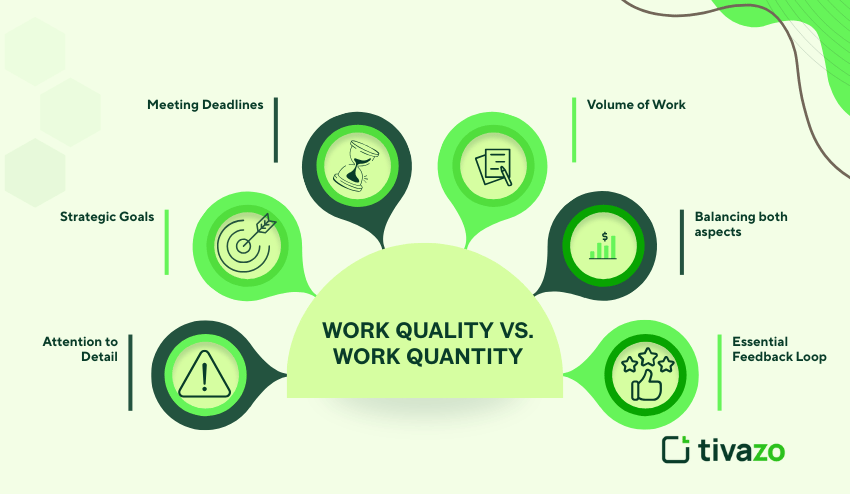
Impact of Organizational Structure: Workload Experience
The members of an organization may distinguish their workload experiences based on their organizational structure. Managers may feel they experience a heavier workload due to their obligations, while employees may feel burdened with the number of tasks they are responsible for completing. Despite these experiences likely varying between formal managers or employees, workload experiences may negatively influence morale and communication around workload and the corresponding tasks.
The following table illustrates how people perceive their workload at different levels in the organization hierarchy:
| Role | Experience of Workload | Workload | Conditions |
| Managers | High because of the strategic responsibility | Moderate to high continuous work, some decision-making, and supervision | Decision-making, accountability, and management of the team |
| Employees | High because of the volume of work | Often, responsible for performing work within the timeline/limits | Task markers, repetitive tasks, and deliverables |
| Team Leads | Moderate, representation of both management and employees | Moderate, responsibilities involving the execution of tasks and coordination | Delegating tasks and workload reporting |
The table demonstrates, while the questions are proven and depending on the order of observations with similar results, managers or employees are not the only ones feeling organizational pressure from workload, and that all group members report this as a challenge that can be improved for the team’s overall success.
Do Managers Work Less Than Employees?
Although managers may be hands-off in their role, their oversight, strategy, and decision-making have much greater impact on the success of the organization than an employee would have when doing their task. Employees will spend the time completing the work of the organization. In contrast, managers oversee several projects and multiple groups of people they coordinate, and make sure they are all working toward the goals and objectives. In addition to the time that will be taken up with planning, reviewing reports, managing conflict, foreseeing future issues, and addressing problems that arise, managers or employees are also responsible for the overall performance of the staff and the entire organization.
This level of responsibility will increase the pressure and the mental load on managers or employees, and may seem less work than that of expecting the employee to perform their assigned work. In this way, although the managerial position is less physical, it is more intense and is just as demanding, or even more demanding than that of the employee.
The 30-60-90 Rule for Managers
The 30-60-90 rule provides a plan for managers or employees to fill the first 90 days in a new role:
- The first 30 days are to learn about the organization, team, and processes. In this period, managers will observe, learn about workflows, figure out the difficulties, and become accustomed to the company culture.
- The next 30 days are to build relationships and begin making changes. This period has the manager connecting with team members, developing trust, and starting the process of making small changes to processes or strategies.
- The final 30 days are the period to take ownership and drive performance. During this time, the manager is fully expected to lead initiatives, make hard decisions, and work toward ensuring team objectives are aligned with organizational objectives.
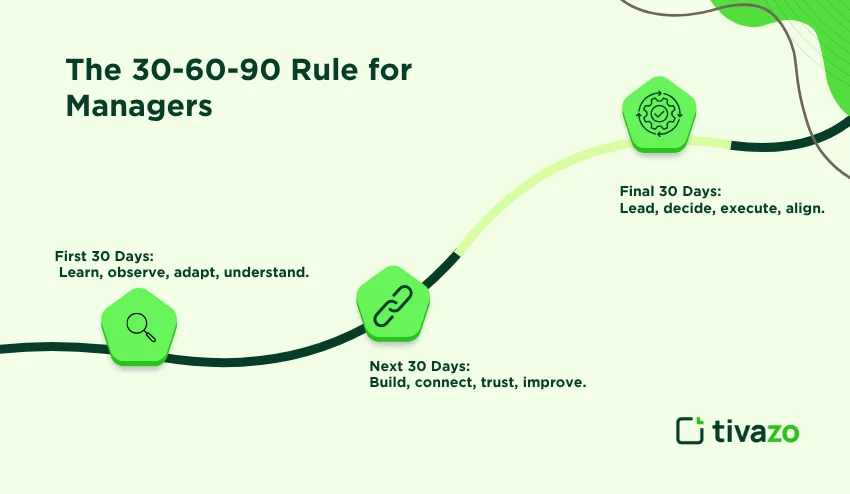
By developing structure, managers or employees can combat uncertainty, build trust and credibility in a new role, and achieve effectiveness in managing and balancing learning, relationship building, and execution. This plan can also bring clarity in terms of progress, setting goals that are realistic, and easing into full ownership and responsibility of the manager’s new leadership position. Once the 30-60-90 rule is completed, if done properly, it can drastically improve the effectiveness of the managers or employees, the cohesion of the team, and the overall performance of the organization.
Conclusion
Assessing whether managers or employees work harder than employees is not just about the time dedicated to the desk. Employees may spend more hours finishing work, but the manager’s role involves all of the strategic planning, decision-making, and team oversight. Managing work often may not have the strong observable product (output) like employee work may have; however, there is a strong mental load associated with work performance. Managers or employees are sustained by the mental characteristics of work performance, alongside, if not to a greater degree than employees, because they are ultimately held accountable for the successes or failures of their organizational unit.
Recognizing the differences of roles can allow the organization to better appreciate each other’s challenges and enable a much more balanced, productive, and respectful workplace while ultimately having both encompass each other in achieving an organizational destination of success.
